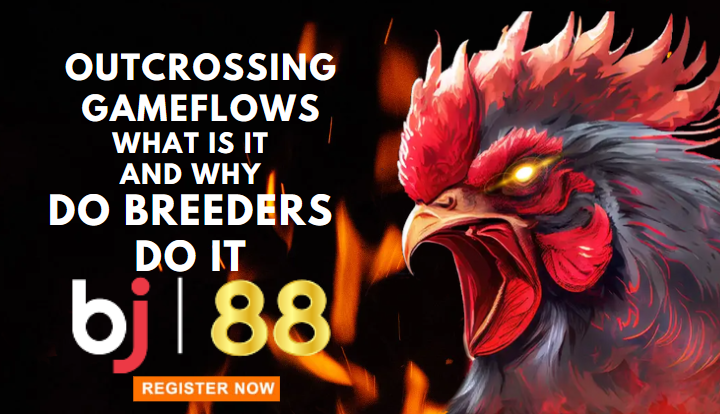Are you a gamefowl breeder looking to improve your bloodlines? If so, then outcrossing may be the answer for you. Outcrossing is the breeding of two unrelated gamefowls. This can help to introduce new genes into the bloodline and improve the overall quality of the offspring.

In the world of gamefowl breeding, there are two main breeding methods: inbreeding and outcrossing. Inbreeding is the breeding of closely related gamefowls, while outcrossing is the breeding of unrelated gamefowls.
Inbreeding can be a very effective way to improve certain traits in a bloodline, such as gameness or fighting ability. However, it can also lead to the expression of recessive genes that can cause health problems or other undesirable traits.
Outcrossing, on the other hand, can help to introduce new genes into the bloodline and reduce the risk of inbreeding depression. It can also help to improve the overall health and vigor of the offspring.
What is Outcrossing?
Outcrossing is the breeding of two unrelated gamefowls. This can be done by breeding a male gamefowl from one bloodline with a female gamefowl from a different bloodline.
There are several reasons why breeders might choose to outcross their gamefowls. One reason is to introduce new genes into the bloodline. This can help to improve the overall quality of the offspring and reduce the risk of inbreeding depression.
Another reason to outcross is to improve the health and vigor of the offspring. When two unrelated gamefowls are bred, the offspring are more likely to be healthy and vigorous.
Finally, outcrossing can also be used to introduce new traits into the bloodline. For example, a breeder might outcross their gamefowls to a bloodline that is known for its fighting ability.
The Benefits of Outcrossing
There are several benefits to outcrossing gamefowls. These include:
- Increased genetic diversity: Outcrossing introduces new genes into the bloodline, which can help to improve the overall quality of the offspring.
- Reduced risk of inbreeding depression: Inbreeding depression is a condition that can occur when gamefowls are inbred for too many generations. It can cause health problems, decreased fertility, and other problems. Outcrossing can help to reduce the risk of inbreeding depression.
- Improved health and vigor: Outcrossing can help to improve the health and vigor of the offspring. This is because unrelated gamefowls are more likely to be compatible with each other genetically.
- Introduction of new traits: Outcrossing can be used to introduce new traits into the bloodline, such as fighting ability or color.
The Drawbacks of Outcrossing
There are a few drawbacks to outcrossing gamefowls. These include:
- Loss of desired traits: If the two bloodlines that are being outcrossed have different desired traits, it is possible that the offspring will not inherit all of the desired traits.
- Increased risk of genetic defects: Outcrossing can increase the risk of genetic defects in the offspring. This is because unrelated gamefowls are more likely to carry recessive genes that can cause genetic defects.
- Difficulty finding compatible mates: It can be difficult to find compatible mates for outcrossed gamefowls. This is because the two bloodlines may not be compatible genetically.
Conclusion:
Outcrossing is a breeding method that can be used to improve the quality of gamefowls. However, it is important to be aware of the potential benefits and drawbacks of outcrossing before using this method.
Meta Description:
Outcrossing gamefowls is a breeding method that can be used to improve the quality of the offspring. It introduces new genes into the bloodline and can help to reduce the risk of inbreeding depression. However, it is important to be aware of the potential drawbacks of outcrossing before using this method.
Subcategories:
- Gamefowl Breeding
- Gamefowl Genetics
- Gamefowl Health
- Gamefowl Management
- Gamefowl Nutrition
- Gamefowl Training
